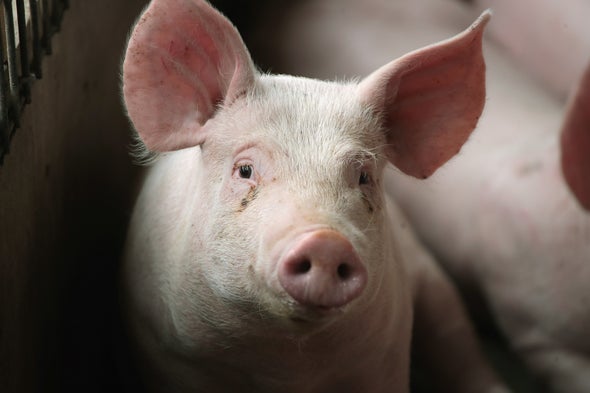 What happens when you process a few tens of millions of gallons of North Carolina’s super-abundant hog waste into biomethane gas and organic fertilizer? We’re about to find out. My latest client is well on its way to building such a plant, ultimately incorporating additional products in the form of electricity and other renewable biofuels such as biodiesel and bio-jet fuel.
What happens when you process a few tens of millions of gallons of North Carolina’s super-abundant hog waste into biomethane gas and organic fertilizer? We’re about to find out. My latest client is well on its way to building such a plant, ultimately incorporating additional products in the form of electricity and other renewable biofuels such as biodiesel and bio-jet fuel.
One thing’s sure: The removal of any portion of the 3.8 billion gallons of waste coming from 9.2 million hogs per year, notorious for its odor and release of airborne pathogens, will greatly improve the quality of life for those in the surrounding communities. The entire region heartily welcomes the proposed plant; you’re not going to see the NIMBY factor in play here.
In addition, there are other significant environmental benefits. In particular, in our civilization’s quest to reduce the environmental damage being created by the consumption of fossil fuels, the subject of biofuels is receiving a large and ever-growing amount of attention from both citizens and law-makers. A great deal of focus is being placed on biofuels, e.g., biomethane, which is chemically identical to the natural gas that is extracted from the Earth’s crust via fracking.
Unlike the process of burning fossil fuels, which releases previously sequestered CO2 into the atmosphere, biofuels are “carbon-neutral,” meaning that the creation of the feedstock removes the same carbon that is then released upon consumption.
In addition, scientists are becoming increasingly aware of and concerned about the environmental issues associated with fracking itself. Six countries (Canada, New Zealand, South Africa, Ukraine, and the U.K.), four states (Washington, New York, Maryland, and Michigan) as well as numerous cities and counties around the U.S. have already banned fracking, due to a host of different environmental issues. Yet the demand for energy-dense liquid fuels will only increase over the foreseeable future, and thus the quest for alternative sources is of ever-growing interest.
The removal of coal from the U.S. electricity grid-mix is happening at a rapid pace, by virtue of both its cost structure, which is no-longer competitive against renewables and natural gas, as well as its mix of greenhouse gases, combined with highly toxic heavy metals and radioactive isotopes. All this is further heightening the need for biomethane.
Biodiesel: It is believed that, in the coming 25 – 50 years, electric transportation will eliminate the demand for gasoline and diesel for most segments of the transportation sector. However, until that very slow transition is completed, the demand for renewable liquid fuels will remain very strong. Biodiesel is a replacement for diesel refined from crude, and biomethane is a replacement for the CNG/LNG that powers a great many fleets of trucks and buses.
Grant Proposal: In the grant proposal I recently completed for them I wrote: In short, there are virtually no conceivable events that will militate against growing demand for biofuels; such would require a complete abandonment of environmental responsibility from the entire ethos of the U.S. Rereading that just now, I see that this was an exaggeration. More accurately: I’m hoping that’s not a conceivable event; environmentalism in the U.S. hasn’t exactly been on a roll these last couple of years.



















